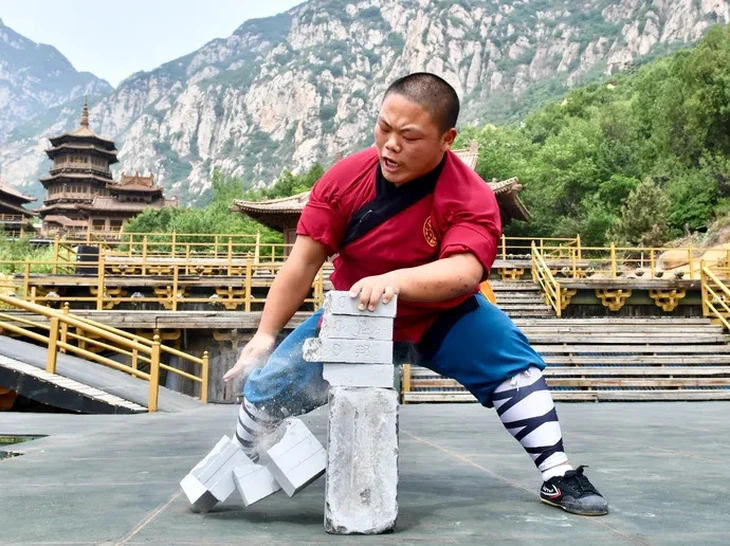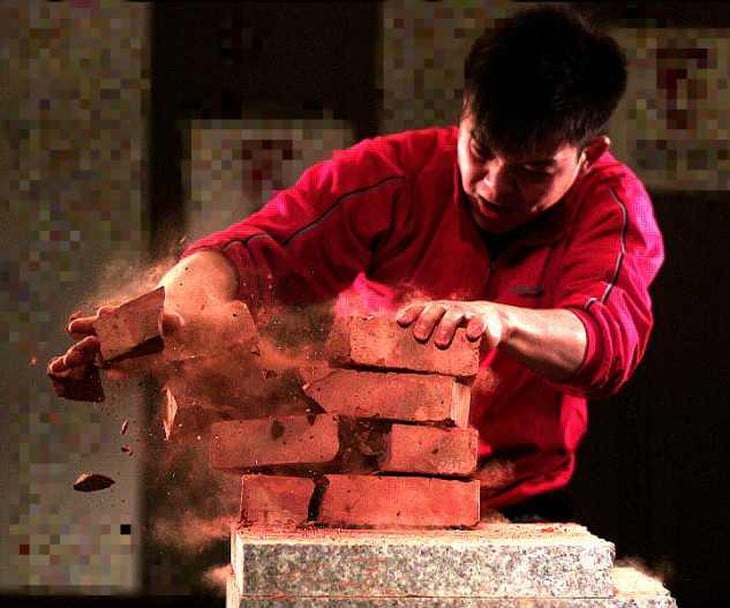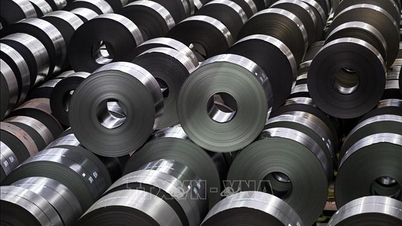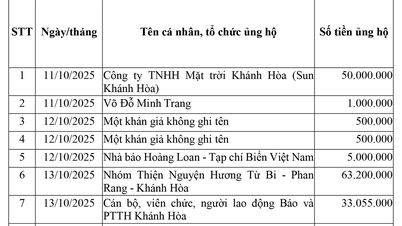
Brick chopping is one of the familiar ways of practicing Shaolin kung fu, the leading martial art in the kung fu world - Photo: XQ
Practice chopping bricks, practice kung fu
This brick chopping performance not only appears in performances but is also included in the training program of many Chinese kung fu schools.
Chinese media reported that Shaolin students also have to undergo “breaking bricks with hand” as a training milestone to hone “strength, bone structure and the ability to withstand blows.” Breaking bricks is an important part of Shaolin Temple’s hard-body training.
In fact, brick chopping practice has a clear purpose in training: increasing the hardness of bones and hands, improving the ability to transmit force and react quickly when striking.
Research from Masaryk University shows that “hand training techniques in traditional martial arts… lead to increased bone mineral density (BMD) according to Wolff's Law.”
According to the study, after more than 100 days of hand training, an individual recorded an increase in BMD of the right hand of 2.1% and the left hand of 1.6%.
So, brick chopping practice, although a performance, is also based on real biological mechanisms: repeated load on bone → thicker regenerated bone → better load-bearing hands.
The clear purpose of this exercise also includes: training the skin - tendons - wrist joints to get used to impact, training the mentality of "not being afraid of pain" and training the technique of transmitting force through the edge of the hand instead of the palm, to reduce injury when striking hard.
In Shaolin martial arts writings, the initial stages of training are often “clapping hands on sand, using sand pillows, covering with sandbags, then moving on to bricks or stones” – meaning from light to strong impacts, from simple to complex. Thus, the concept of “breaking bricks” is a test of power, not the ultimate goal.
Take advantage of scientific principles?
From a technical and scientific perspective, brick breaking is analyzed as follows: a study of “brick breaking” showed that the decisive factor for success is not simply the maximum force, but the impulse - that is, the load applied in a very short time.
When the hand (or edge of the hand) hits the brick with the correct speed and force transfer, the force concentrated in a small area will exceed the tolerance threshold of a brittle material like brick.
An in-depth article on Zhihu also pointed out: “To smash a brick, a martial arts athlete must accelerate his hand to a high speed, and the contact point must be small to create enough pressure.”

There are many reasons to chop bricks with the edge of your hand - Photo: CN
In addition, the reason many martial arts schools require the use of the edge of the hand is because the edge of the hand has a stronger bone structure than the palm - the little finger, the fifth metacarpal bone has fewer nerves, better contact with force and is less susceptible to injury when practicing for a long time. Choosing the contact surface of the edge of the hand is also a technique to ensure safety and effectiveness.
However, it should also be noted that many of today's brick-breaking games are highly theatrical, with material preparation or “block gaps” that make them easier to break.
“Having spacers between blocks makes it easier – it's more of a technical trick than a reflection of real strength,” warns an article in the Chinese Education newspaper.
Therefore, the image of chopping bricks should be seen as a symbolic part of traditional martial arts, but should not be understood as absolute proof of fighting ability or "iron fist" in real life.
In general, the need for traditional kung fu to practice brick chopping comes from the need to train impact resistance, bone and joint strength, technical force transmission and fighting spirit.
But on the other hand, chopping bricks with the edge of the hand is like a trick, a trick, making the most of scientific principles to show off the body's strength.
Source: https://tuoitre.vn/vi-sao-cac-mon-kung-fu-thich-bieu-dien-chat-gach-20251028094700188.htm


![[Photo] Flooding on the right side of the gate, entrance to Hue Citadel](https://vphoto.vietnam.vn/thumb/1200x675/vietnam/resource/IMAGE/2025/10/28/1761660788143_ndo_br_gen-h-z7165069467254-74c71c36d0cb396744b678cec80552f0-2-jpg.webp)

![[Photo] National Assembly Chairman Tran Thanh Man received a delegation of the Social Democratic Party of Germany](https://vphoto.vietnam.vn/thumb/1200x675/vietnam/resource/IMAGE/2025/10/28/1761652150406_ndo_br_cover-3345-jpg.webp)
![[Photo] Draft documents of the 14th Party Congress reach people at the Commune Cultural Post Offices](https://vphoto.vietnam.vn/thumb/1200x675/vietnam/resource/IMAGE/2025/10/28/1761642182616_du-thao-tai-tinh-hung-yen-4070-5235-jpg.webp)





























![[Photo] President Luong Cuong attends the 80th Anniversary of the Traditional Day of the Armed Forces of Military Region 3](https://vphoto.vietnam.vn/thumb/1200x675/vietnam/resource/IMAGE/2025/10/28/1761635584312_ndo_br_1-jpg.webp)












































































Comment (0)